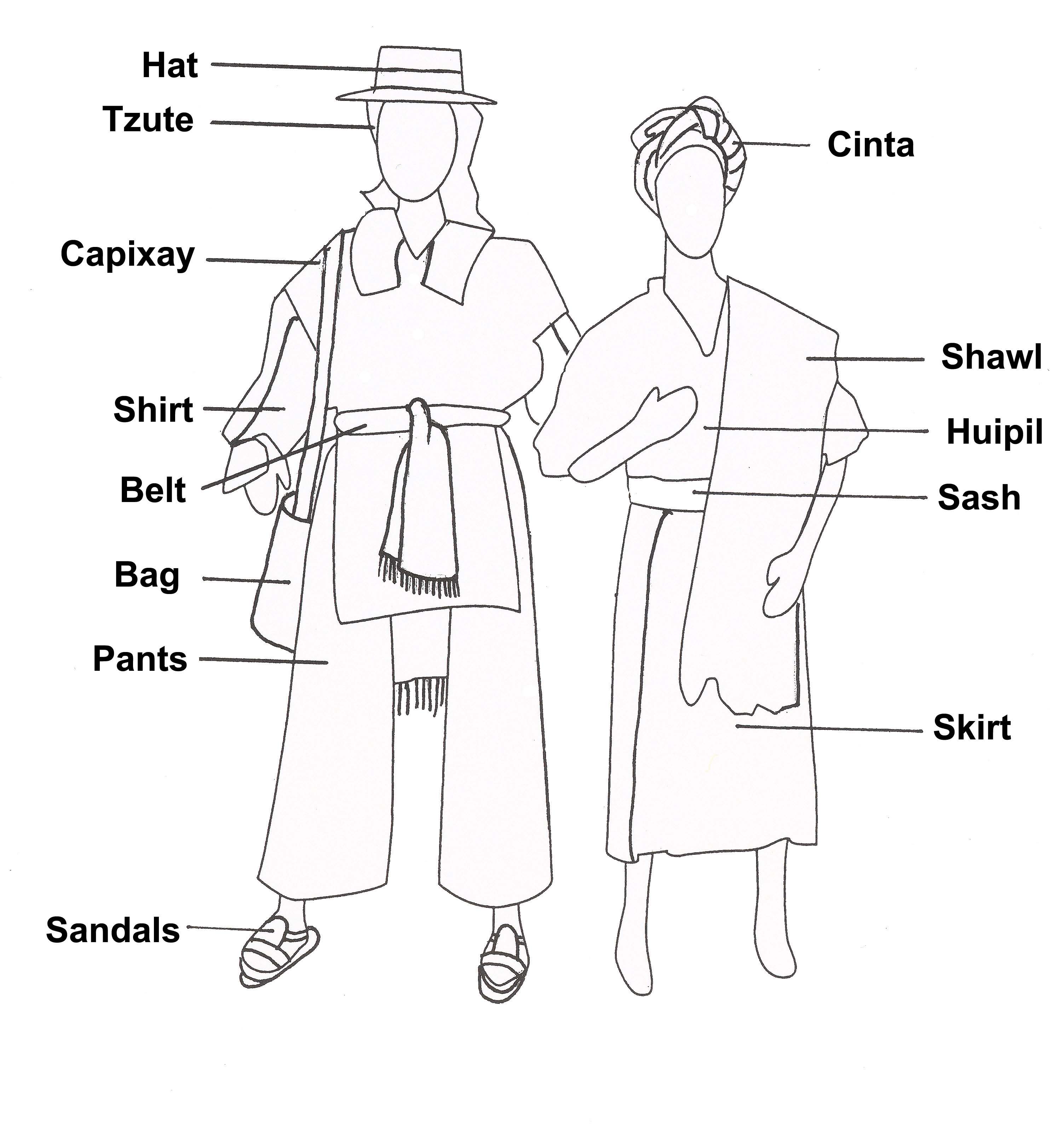


Maya women wear huipíles, and huipíles adorn the statues of their saints in the church. The design of the huipíl identifies the community to which the wearer belongs.
Elements of Precolumbian, Aztec and European styles are incorporated in garments from different regions, although the designs have been modified over time.
After centuries of Colonial rule and loss of native lands, the Maya had neither time nor money to make traditional garments. By the early 1800s, women began to wear an undecorated huipíl or adopted embroidered European-style blouses. By the end of the 19th century, most Maya women had forgotten the technique of brocade weaving entirely.


Only a few women in each community have the skill, knowledge and dedication to weave batz'i luch, or "true designs" for the ceremonial huipíl.
Ceremonial huipíl of Santa Maria Magdalenas
These master weavers are the esteemed servants of the saints, who care for and study the oldest huipíles and become the recognized scholars of their weaving tradition. The ceremonial huipíl is only worn by the statues of saints and the wives of religious officials.